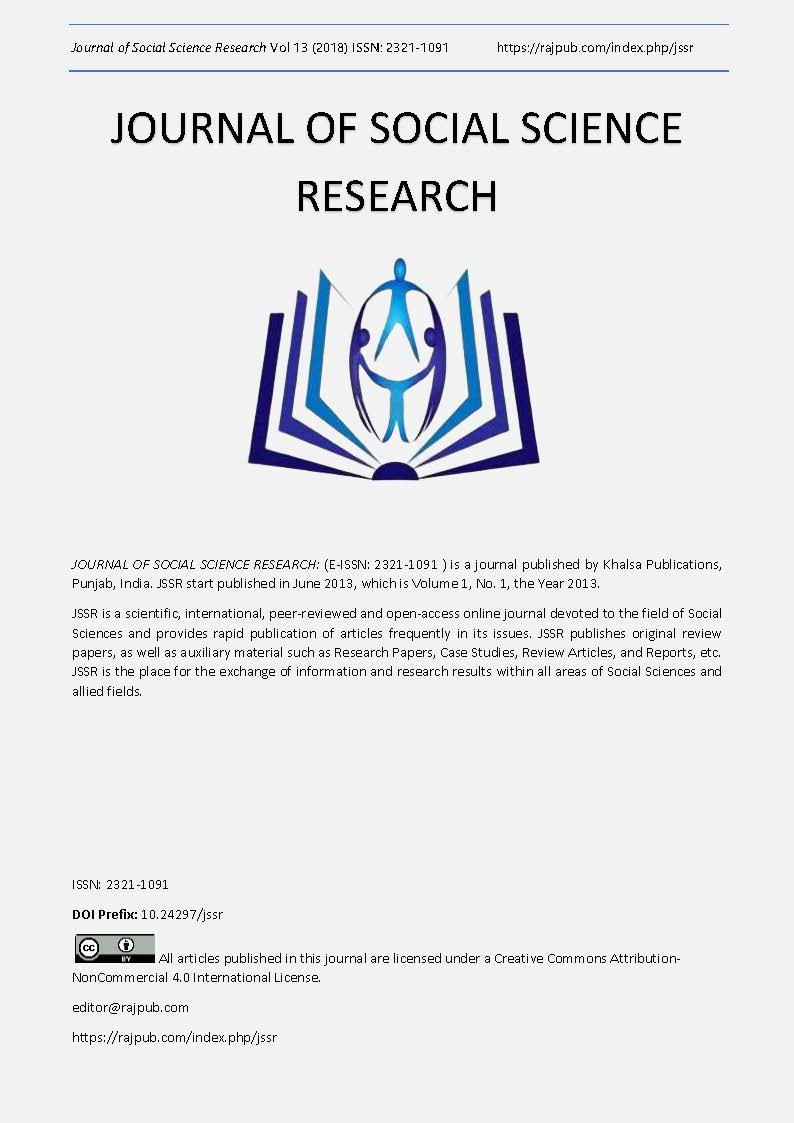Empathy as Political Action Can Empathic Engagement Disrupt Narratives of Conflict in Israeli-Palestinian Relations
DOI:
https://doi.org/10.24297/jssr.v13i0.7934Keywords:
Feminist theory, political psychology, political identity, ethnic conflict, Israeli-Palestinian conflict, peace studiesAbstract
Democracy and peace rest on the ability of political institutions to channel conflict nonviolently. Most of the nearly two hundred states in the world today, however are not the product of negotiated social contracts. Rather, they came into existence as a result of political violence – imperialism, conquest, border wars, revolution, civil wars, anti-colonial independence movements, and the disintegration of empires. State formation thus often leaves a legacy of grievances and identities shaped in part by narratives and experiences of historical injury and victimization. Identity narratives are implicated not only in interstate conflict, but also in “ethnic” or “communal” conflicts within states. Can collective political action aimed at evoking empathy across the divide of identity-based enmity counter, challenge, or even disrupt these narratives of victimization and open spaces for the development or strengthening of identities committed to “what we have in common” as well as “how we are different,” and thus contribute to de-escalating, mitigating, resolving, or avoiding violent conflict altogether?
Downloads
References
Alford, C. Fred, (1989) Melanie Klein and Critical Social Theory. New Haven, CT: Yale University Press.
Alon, Chen. (2016) Combatants for Peace Personal Stories. Accessed August 16, 2016 at http://cfpeace.org/personal-stories/chen-alon/
Anderson, Benedict, (1983) Imagined Communities: Reflections on the Origin and Spread of Nationalism. New York, NY: Verso Press.
Anderson, Jennie, (2016) Denmark has figured out how to teach kids empathy and make them happier adults, Quartz. August 22, 2016. Accessed online March 19, 2018 at: https://qz.com/763289/denmark-has-figured-out-how-to-teach-kids-empathy-and-make-them-happier-adults/
Bhabha, Homi, (1990) Nation and Narration. New York, NY: Routledge.
Brown, Brené, (2013) “Brené Brown on Empathy.” Accessed online August 16, 2018 at https://www.youtube.com/watch?v=1Evwgu369Jw
Brown, Brené, (2018) “Brené Brown on Boundaries.” Accessed online August 16, 2018. https://www.youtube.com/watch?v=6NxB6c6d39A .
Burack, Cynthia, (1994) The Problem of the Passions: Feminism, Psychoanalysis, and Social Theory. New York, NY: New York University Press.
Butler, Judith, (1990) Gender Trouble: Feminism and the Subversion of Identity. New York: Routledge.
Chen. Rosalie, (2017) “Can empathy be learned? Science offers some clues,” Religion News Service. October 24, 2017. Accessed March 15, 2018 at https://www.religionnews.com/2017/10/24/can-empathy-be-learned-science-offers-some-clues/
Chodorow, Nancy, (1978) The Reproduction of Mothering: Psychoanalysis and the Sociology of Gender. Berkeley, CA: University of California Press.
de Waal, Frans, (2008) “Putting the altruism back into altruism: the evolution of empathy,” Annual Review of Psychology, Volume 59, 279-300.
Dewar, Gwen, (2009) Teaching empathy: Evidence-based tips for fostering empathy in children,” Parenting Science. Accessed online March 19. 2018 at: https://www.parentingscience.com/teaching-empathy-tips.html
Dinnerstein, Dorothy, (1976) The Mermaid and the Minotaur. New York, NY: Harper Rowe.
Elshtain. Jean Bethke, (1988) Women and War. Chicago, IL: University of Chicago Press.
Gilligan, Carol; Richards, David A. J. (2009) The Deepening Darkness: Patriarchy, Resistance, and Democracy's Future (p. 12). Cambridge University Press. Kindle Edition.
Honigsbaum, Mark, (2013) “Barack Obama and the ‘empathy deficit,’” The Guardian. January 4, 2013. Accessed March 19, 2018 at:
https://www.theguardian.com/science/2013/jan/04/barack-obama-empathy-deficit
Irigaray, Luce, (1977) This Sex Which Is Not One. Ithaca, NY: Cornell University Press.
Moi, Toril, (1992) Feminist theory & Simone de Beauvoir. Oxford, UK: Blackwell Publishers.
Mounk, Yasha, (2018) The People vs Democracy: Why Our Freedom Is in Danger and How to Save It. Cambridge, MA: Harvard University Press.
Wilson, Donna and Marcus Conyers, (2017) “4 Proven Strategies for Teaching Empathy
Help your students understand the perspectives of other people with these tried-and-tested methods.”Edutopia. January 4, 2017 Accessed March 19, 2018 at: https://www.edutopia.org/article/4-proven-strategies-teaching-empathy-donna-wilson-marcus-conyers
Wiseman, Theresa, (2007) “Toward a Holistic Conceptualization of Empathy for Nursing Practice,” Advances in Nursing Science. Vol. 30, No. 3, pp. E61–E72.
Downloads
Published
How to Cite
Issue
Section
License
 All articles published in Journal of Advances in Linguistics are licensed under a Creative Commons Attribution 4.0 International License.
All articles published in Journal of Advances in Linguistics are licensed under a Creative Commons Attribution 4.0 International License.




